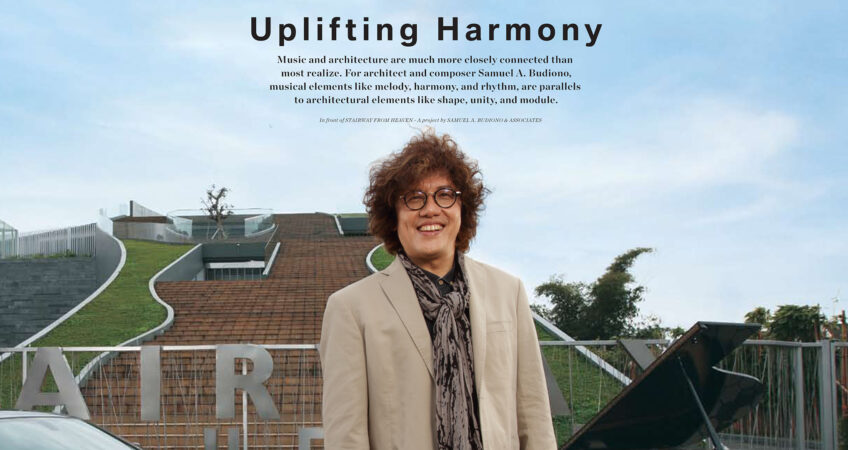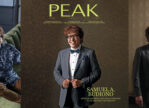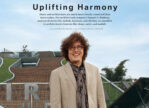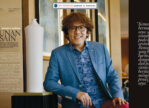Uplifting Harmony

Music lovers notice that some types of music correspond perfectly with a particular venue. The result of a perfect synergy between the two arts could be most profound. It could be, for example, blissfully transcendental as how one may feel upon hearing a solemn choir in a Gothic cathedral. Alternatively, it could be radically exhilarating when one felt the energy of the punk sound at the infamous CBGB Bar of New York City in the early 1970s. It could also be intoxicatingly intimate as one encountered Chet Baker’s whisper-like singing in a small, dark jazz club with low ceilings. Indeed, music and architecture are much closer cousins than many of us initially thought. Consequently, when an artist has a strong connection to both worlds, it is natural to expect that his or her creations would generate strong impact to their audience.
Samuel A. Budiono is such an example. He is an Indonesian architect, graduated from the University of Wisconsin-Milwaukee, USA with Europe Study Program in Paris & Berlin, who is also an accomplished jazz musician. His musical preference is fusion/smooth jazz, a sub-gen re which mixes jazz with electronics, R&B, pop, and rock. Its mood is more frequently and generally associated with a positive, sunny deposition, hence its greater accessibility and marketability compared to the generally more solemn mainstream jazz genre. But just like mainstream jazz, even smooth fusion thrives on improvisations and its embrace of freedom. Samuel himself is clearly aware of the importance of mainstream jazz even for the fusion sub genre. He quoted the great pianist and composer Thelonious Monk in his profile as a source for his inspiration in both music and architecture. Samuel clearly stated that his designs always explore new ideas and he aims to “up lift” spirits through his creations.
His designs are clearly rooted from the Modernist school, with its emphasis on clean lines and constant at tempt to minimize excessive decoration. Samuel, none the less, does not espouse austere aesthetics like those found in works typically associated with the Bauhaus school. His take on modernism constantly takes a positive and optimistic feel, perhaps not unlike how a smooth jazz musician would cover “So What”, the tune in Miles Davis’s seminal “Kind of Blue” album.
How do you define the connection between architecture and music? Where do you think the chemistry lies?
Music and architecture are inseparable for me. It is a natural thing for me since I am a composer and a jazz pianist, as well as an architect. I use musical expression as an approach in architecture. Like a musician’s breath to a wind instrument or a pianist’s flying fingers to a piano, that’s how geometry and space comes to play when I create architecture.
For me, the process of composing architecture is the same with the process of designing music. Architecture and music are complementary and inseparable elements of my life. Both share the same philosophy, feelings, and rules in order to produce a good result.
What work you consider as your masterpiece? Tell us about the process.
Honestly, I have not reached the point where I can say that my works satisfy me. I still have the passion to keep moving forward and improving myself. Frank Gehry still produces magnificent work of architecture even when he’s already 85 years old. Compared to him, I am just a teenager. It takes a lot of effort to produce a phenomenal work to be considered ‘a masterpiece’.
Your work has been acknowledged in international level. Among those awards, which is the most memorable to you?
In my opinion, each award means a lot and memorable to me Because it makes me feel that the public appreciates my work. But if I have to choose, that would be the winner of People’s Choice Award at World Architecture Festival & Inside World Festival of Interiors in Barcelona. Equally memorable was World Architecture Awards, Cityscape Architectural Review Awards in Dubai, as well as when I was chosen as a nominee for SIA-GETZ Architecture Prize for Emergent Architecture in Asia.
What do you think about the global trend and dynamics in architectural industry, music, as well as creative industry in general?
Architectural industry and music industry move very rapidly that those who remain static will be left behind. Winston Churchill once said, “To improve is to change; to be perfect is to change often.” Aside from the need to constantly moving forward, education is an important element to increase public appreciation of creative industry, so we can achieve similar level to the way developed countries appreciate art. It reflects how developed a culture is.
How competitive is Indonesian architecture in global level?
Architecture in Indonesia is developing indeed. But we are still constrained by normative values or habits that are considered as obligation to be applied. We need to ‘open up’ to accept innovations to adapt to the demand of the constantly developing world. There is no need to be ashamed to learn or to emulate better and more advance things. We can then find a way to make it better, by combining it with local culture.



